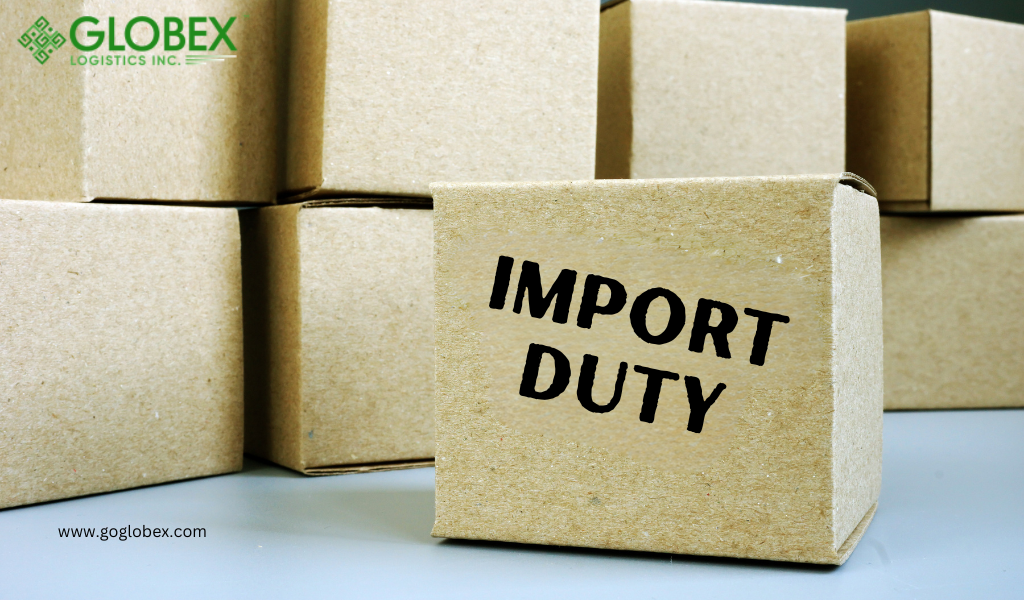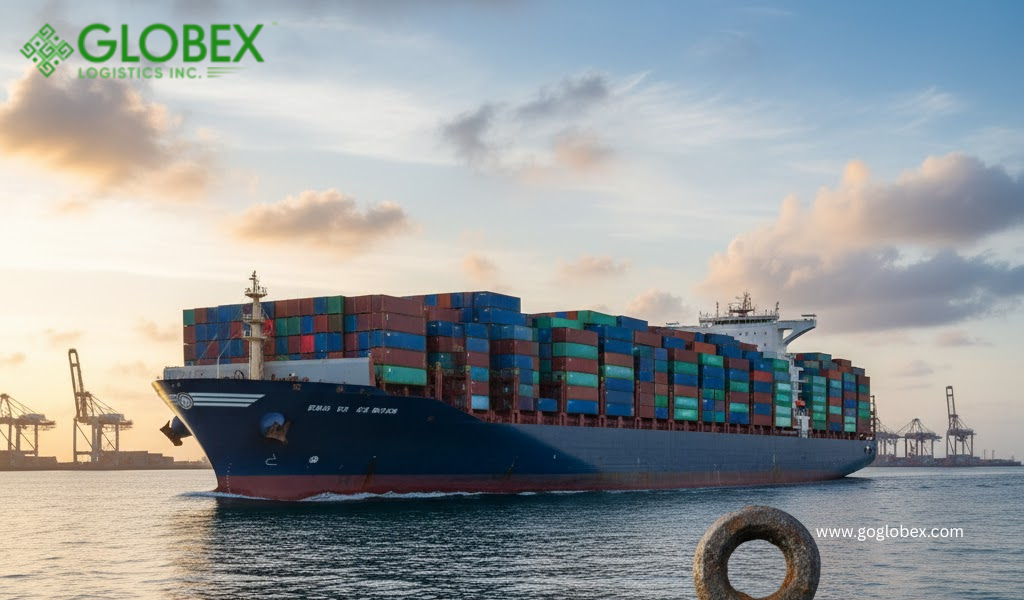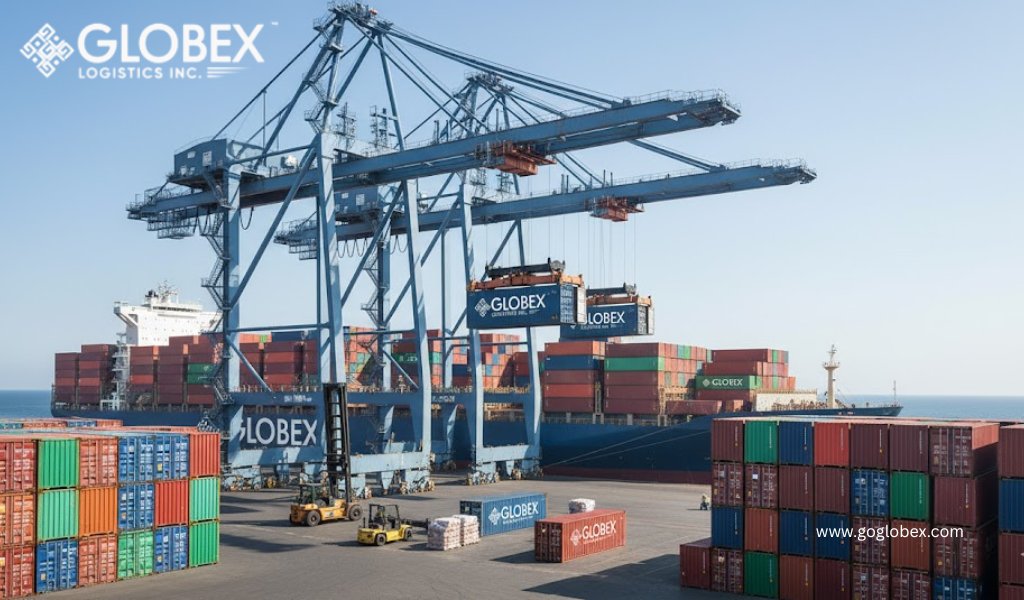
Exploring The Complex Aspect of Tariffs on Imported Goods into Canada
The information provided by us on goglobex.com is for general informational purposes only. All information is provided in good faith; however, we make no representation or warranty of any kind, express or implied, regarding the accuracy, adequacy, validity, reliability, availability, or completeness of any information on the Site. UNDER NO CIRCUMSTANCE SHALL WE HAVE ANY LIABILITY TO YOU FOR ANY LOSS OR DAMAGE OF ANY KIND INCURRED AS A RESULT OF THE USE OF THE SITE OR RELIANCE ON ANY INFORMATION PROVIDED ON THE SITE. YOUR USE OF THE SITE AND YOUR RELIANCE ON ANY INFORMATION ON THE SITE IS SOLELY AT YOUR OWN RISK.
In the developing field of international trade, understanding the complexities of tariffs on imported goods into Canada is more important for businesses and consumers. Recent activities, particularly the levying of new tariffs by the United States on Canadian products, lead to more intricacy. In this article, we will explore the current tariff structure, the implications of recent US actions and offer intuition into facing these challenges effectively.
WHAT ARE TARIFFS AND ROLE OF TARIFFS IN GLOBAL TRADE-
Tariffs are Taxes imposed by the government on imported goods into the country.
- Revenue generation – tariffs are a significant source of income for a country.
- Protection of domestic industries - imported goods will become expensive after imposing tariffs which will help the country to protect domestic production companies.
- Political leverage- Tariffs can be used as tools in trade negotiation to influence the policies of other nations.
However the application of tariffs can result in a trade dispute.
CANADA'S IMPORT DUTY RATES AND TARIFF STRUCTURES –
Canada has a multifaceted tariff system influenced by various trade agreements and international commitments. The main components are –
- Most-favoured -nation (MFN) tariffs– standard tariff rates – will be applied on goods from countries that are members of World Trade Organizations, unless a preferential rate applies.
- Preferential tariffs – Under agreements like the United States-Mexico-Canada Agreement (USMCA), certain goods benefit from reduced or eliminated tariffs.
- General tariff – This tariff is applied to the countries which are not included in MFN status or specific trade agreements with Canada.
AN OVERVIEW OF RECENT US TARIFFS ON CANADIAN GOODS-
US announced on April 2, 2025, the imposition of a 10 % tariff on all imported goods with additional tariffs targeting specific countries, including Canada. This move is called Liberation Day. The main motto is to address trade imbalance and protect American industries.
CANADA'S RESPONSE TO US TARIFF-
Canada has implemented some activities to protect its economic interests.
Retributive tariff – Canada levied 25 % on $30 billion worth of US goods, starting from March 4, 2025. Targeting products from agricultural items to consumer goods.
Diplomatic engagement – Canadian officials are actively engaging with US officials to seek resolution and reduce the impact on bilateral trade.
SUGGESTIONS FOR BUSINESSES AND CONSUMERS –
Tariff imposition has the below consequences –
- Surge in cost- due to increased tariff prices of imported goods will be increase which ultimately leads to increase prices for consumers.
- Supply chain disturbances- in cross-border operations may affect it and it may experience delays or increased operational complexities.
- Market instability – The uncertainty surrounding trade policies can lead to fluctuations in the financial market affecting investment decisions.
NAVIGATING THE CURRENT TRADE ENVIRONMENT -
Consider the following strategies to manage the challenge imposed by the current tariff landscape :
Be in the loop – check official communications from government agencies like CBSA for updates on tariff regulation and trade policies.
Diversify supply chains- Check other alternative sourcing options which have lower tariff.
Engage in advocacy - participate in industrial association and trade groups to collectively voice concern and influence policy decisions.
Look for professional advice- Consult with trade experts or customs brokers to ensure compliance and create strategies to lower the tariff effect.
FAQs About Import Duty
How new US tariff changes affect Canadian exporters ?
The US has levied a 10 % tariff on all imported goods, with some additional tariffs on a lot of countries, including Canada. This will lead to a rise in cost for Canadian exporters and depletion in competitiveness in the US market.
What products are subject to Canada's retaliatory tariffs on US goods ?
Canada has imposed a 25 % tariff on a range of US products, including agricultural goods, consumer products, and industrial materials.
Are tariffs beneficial or harmful to the economy ?
The effect of tariffs is a debatable point. Tariffs help to protect domestic industries. but it also leads to expensiveness and trade disputes. Tariffs can disturb the supply chain with negative economic consequences.
How can businesses lower the effect of tariffs ?
Business can explore other alternative supply chain options, check for alternative sourcing options, seek alternative markets.
From where will I get regular updates on Canada's trade policies and tariffs?
Check out the official website of CBSA for the latest updates and communicate with the Department of Finance Canada.
What are the current import duty rates in Canada ?
Import duty rates vary from product to product and as per their country of origin. For more detailed and updated information, please check the Custom Tariff 2024 provided by the CBSA.
The current situation of tariffs on imported goods into Canada is marked by complexity and rapid change. This is significantly influenced by recent US trade policies. Staying informed, proactive planning and strategic engagement are essential for businesses and consumers to navigate these challenges effectively.
Recent posts
categories





